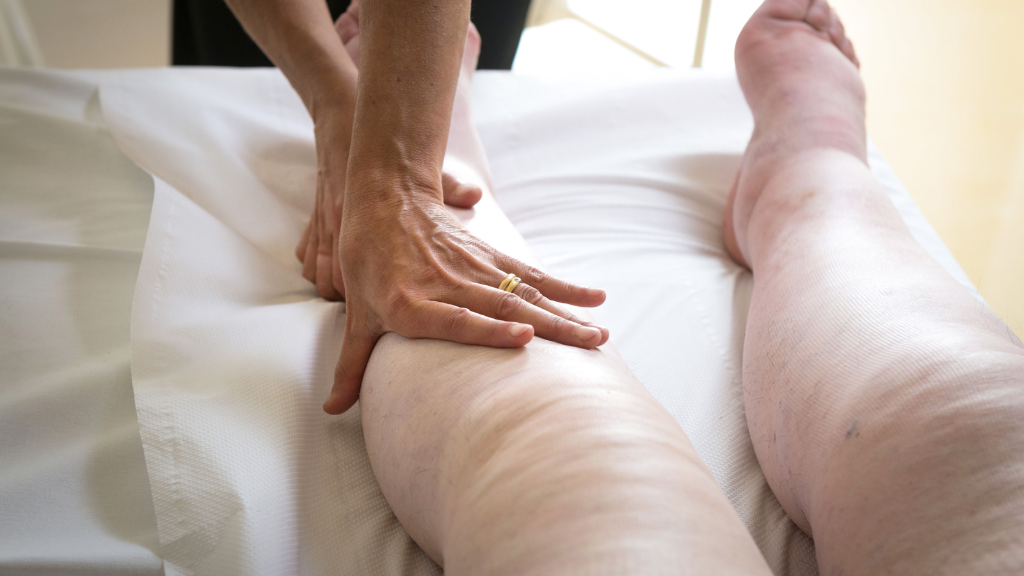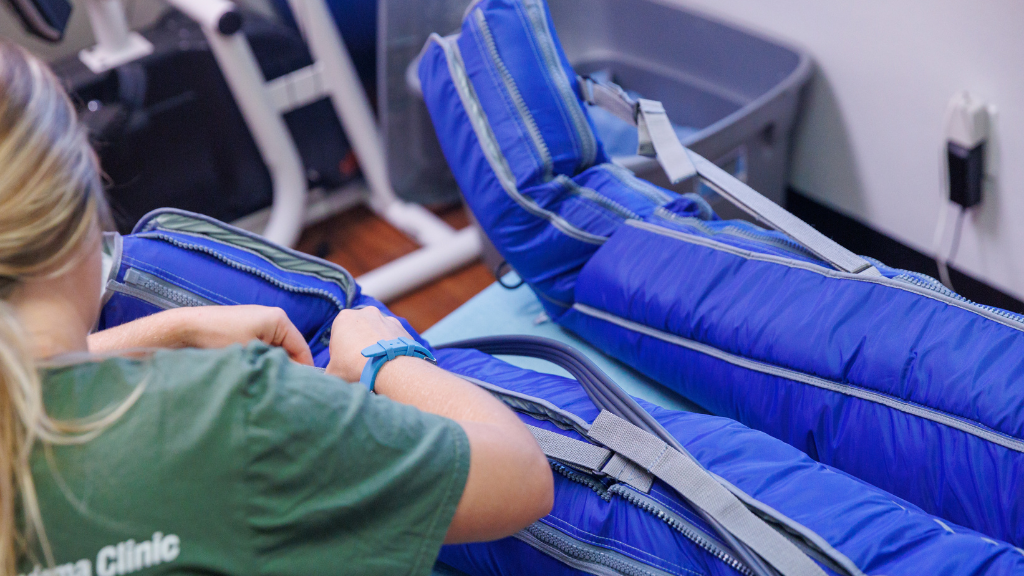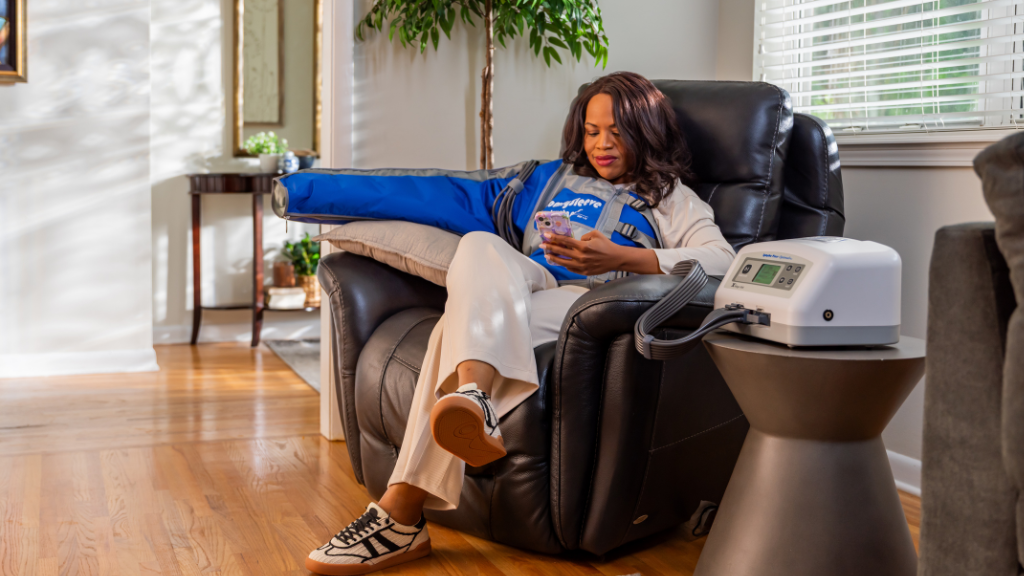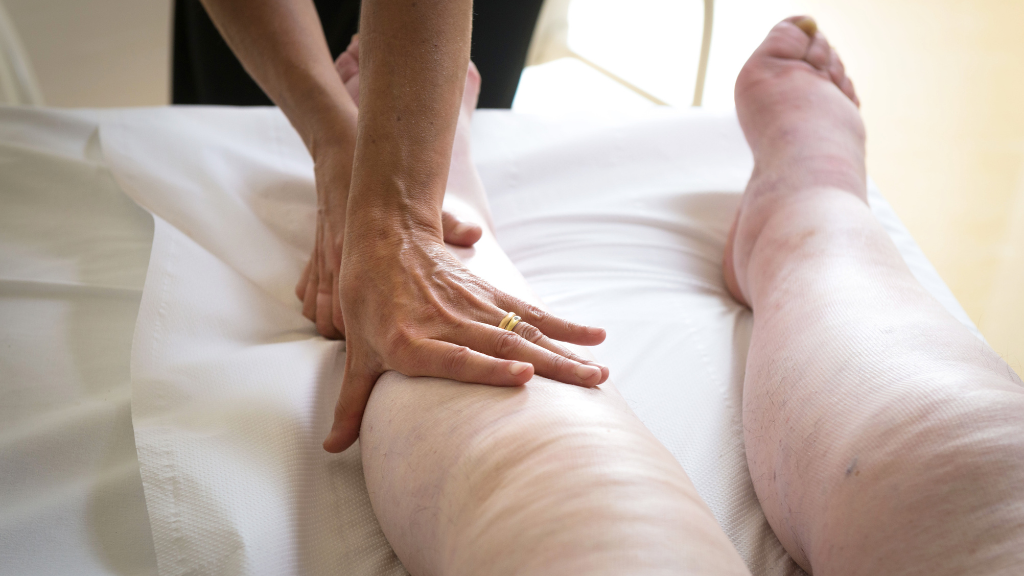This is a 6-minute read.
Are you starting a new physical therapy regimen for lymphedema or are considering your options? Lymphedema is highly manageable with the right treatments in place.
Here’s what you need to know about the latest options including physical therapy, manual lymphatic drainage, compression, and other aspects of treating your lymphedema with a proactive therapy plan.
What is Lymphedema?
Lymphedema is a dysfunction of the lymphatic system that can cause excessive swelling, inflammation, pain, tight skin, open sores, and chronic health issues. There are two main types: primary lymphedema and secondary lymphedema.
Primary lymphedema is a malformation of the lymphatic system and is diagnosed when the body’s lymphatic system fails to process fluids properly. It may be a hereditary or genetic condition, although the precise cause is unknown.
Secondary lymphedema, also known as acquired lymphedema, is much more common than the primary form. It’s typically present in the legs, arms, and trunk, and arises from lymphatic system damage due to injury, surgery, infection, cancer, or other diseases/conditions that interfere with normal lymphatic function.
The latest statistics from the National Institutes of Health (NIH) show that up to 1 in 1,000 Americans may have lymphedema. Approximately 30% or more of breast cancer survivors and up to 75% of people with head/neck cancer develop lymphedema. Still, lymphedema is frequently misdiagnosed and undiagnosed due to confusion with other conditions and a lack of awareness, even amongst the medical community.
One of the most important things to know about lymphedema is that it progresses in stages and is more treatable with early diagnosis. If you begin treating your lymphedema in stage 0 or 1 rather than stage 2 or 3, you have a better chance of minimizing your symptoms and preventing the condition’s eventual progression.
What are My Options for Physical Therapy for Lymphedema?
The five main treatment options for lymphedema management are manual lymph drainage (MLD), compression therapy, decongestive exercises, skin/nail care, and lifestyle changes/patient education. Together, these fall under the overall umbrella of complete decongestive therapy (CDT), which is considered the gold standard of lymphedema care.
Below are summaries of the five main treatment options. These are usually used together in a customized treatment plan under the supervision of a lymphedema treatment professional for the best possible health outcomes.
- MLD uses gentle rhythmic massage to promote fluid flow and should only be performed by a trained MLD therapist.
- Compression therapy involves wraps, bandages, garments, or pneumatic compression to minimize swelling through resistance.
- Decongestive exercises entail posture, flexibility, strength, breathing, and moderate aerobics for better lymphatic flow.
- Skin/nail care addresses the risks posed by brittle skin and nails, including hygiene and infection control.
- Lifestyle changes/patient education techniques involve lifestyle modifications that make lymphedema treatment most successful.
Education is a key aspect of lymphedema treatment. Any physical therapy or treatment program for lymphedema should include a significant educational element where lymphedema professionals provide information and tips to help the person self-manage their condition.
How Can Physical Therapy Help My Lymphedema?
Proper physical therapy helps to manage lymphedema symptoms by easing fluid buildup and preventing dangerous and uncomfortable inflammation, pain, and sores. Over time, physical therapy for lymphedema can also help preserve your flexibility and range of motion, rather than allowing your lymphedema to restrict your mobility.
Lymphedema therapy has proven emotional and psychological benefits. The right lymphedema treatment plan provides mental support and allows you to thrive with your lymphedema rather than feeling limited or controlled by it.
Many types of lymphedema treatment specialists help support people in search of effective treatment options. A certified lymphedema therapist (CLT) holds 135 hours of training including lymphedema therapy instruction, compression bandage application, and other key aspects of treatment. There are also lymphedema specialists who perform MLD, bandaging, and other therapies.
Depending on your symptoms and related conditions, you can also explore treatment options from a doctor who is a specialist in vascular conditions, plastic surgery, hematology, or radiation/oncology. If you’re unsure of which type of healthcare professional you need, consult the Mayo Clinic’s comprehensive list of lymphedema doctors qualified to treat your condition.
Benefits of Physical Therapy for Lymphedema
If you live with lymphedema, you know how difficult it can be to manage your condition. This can impact your lifestyle and prevent you from participating in the activities you enjoy. With the right lymphedema physical therapy, you can control your swelling and get back to living the life you want. Your therapist will take an in-depth assessment of your condition and create a personalized plan that focuses on reducing your symptoms. Early diagnosis and treatment are critical to halt the progression of this chronic disease. The earlier you see a therapist, the more likely you are to receive positive outcomes.
We Support Your Lymphedema Physical Therapy
You deserve a proactive lymphedema treatment plan to help you stay active and live life to the fullest. At Lympha Press, we provide a wide selection of innovative lymphedema therapy options designed to help people succeed with their ongoing lymphedema treatment.
Pneumatic compression therapy devices use air-filled chambers to apply compression and release sequences to the areas of treatment. Lympha Pants and arm sleeves are size-inclusive and easily adjustable, and multi-chambers provide additional compression therapy options. For larger-bodied patients with limited mobility, consider the LymphaPod.
For more information about the wide range of your lymphedema treatment options, you’re welcome to contact us or explore our online resources including our popular Lympha Press Blog.






